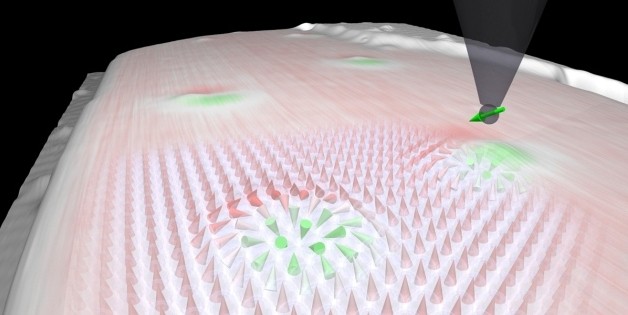A groundbreaking new particle has been discovered that could potentially be used in extremely dense hard drives. Known as skyrmions, or microscopic twisted magnetic vortices, the particle could prove extremely useful in the future of storage on magnetic hard drives, where traditional drives fast approach a density barrier.
Scientists have known about skyrmions since the 1960s, but a recent discovery has allowed them to create and destroy them at will. The technique involves using a scanning tunneling microscope (STM) and a polarized current to force groups of atoms into knot-like twisted configurations. The skyrmions resist unraveling, and so they can be theoretically used to store zeros (untwisted) or ones (twisted), the key to storing data digitally.

Kristen von Bergmann, a physicist at the University of Hamburg, says that skyrmonic hard disks could hold 20 times more data per unit area than current hard disks, as each skyrmion is only a few nanometers in diameter. This means that instead of having a hard drive with 4 TB of space, in the future a skyrmonic drive of the same size could hold 80 TB.
Unfortunately the technology is in the very early stages, and at the moment it's virtually unusable for data storage. The team at the University of Hamburg only managed to create four skyrmions at a time, with a success rate of around 60%. It was also only possible to control the particles at 4.2 kelvin (the temperature of liquid helium; or -267ºC, -452ºF), which is far too cold for normal computer usage.
Interestingly, the exact mechanism that provides the twisting and untwisting of skyrmions is currently unknown. More research into the particle and what causes the twisting could provide the key for high-density storage in the future.